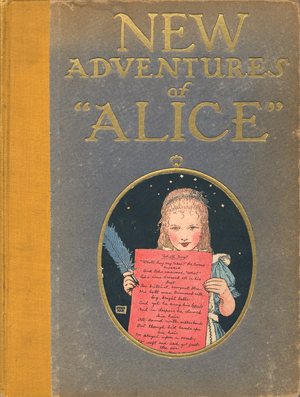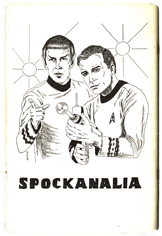Fan fiction facts for kids

Fan fiction, also called fanfic or FF, is a type of story written by fans. These stories are based on existing books, movies, TV shows, or video games. Fans use the original characters and settings. Sometimes they add new characters or change the world a little. Fan fiction can be very short, like a few sentences. It can also be as long as a whole novel!
Fan fiction is usually not officially approved by the original creators. This means it's not part of the official story, or canon. Writing fan fiction can sometimes cause issues with copyright, which are rules about who owns creative work. Some original creators like fan fiction, while others don't.
The idea of fan fiction became clearer in the 20th century. This was when copyright laws started to make a difference between official stories and fan-made ones. Fan fiction often explores what happens "outside" the main story. It can even imagine characters in a completely different world, known as an alternative universe. These fan-created ideas are called "fanon," which is different from the official "canon."
What is Fan Fiction?
The term fan fiction first appeared in print around 1938. Back then, it often meant science fiction stories written by everyday people. These were not professional writers. By 1944, a fan encyclopedia called Fancyclopedia described it as "fiction about fans." Sometimes it was about professional writers or even included famous science fiction characters. People also used "fan fiction" to mean any fan-written story published in a fan magazine.
How Did Fan Fiction Start?
Early Story Sharing
Long ago, before modern copyright rules, writers often borrowed characters and plots from each other. For example, many of William Shakespeare's famous plays, like Romeo and Juliet and Othello, were inspired by stories from other writers.
In 1614, a writer named Alonso Fernández de Avellaneda even wrote a sequel to the famous book Don Quixote. He did this before the original author, Miguel de Cervantes, had finished his own second part! Some people even wonder if very old works, like Dante Alighieri's Inferno, could be seen as a kind of fan fiction based on the Bible.
Stories Inspired by 19th-Century Books
In the 1800s, many popular books inspired other writers to create new stories. These weren't always approved by the original authors. For example, new tales were written about Bram Stoker's Dracula. Jane Austen's books are still very popular for fan-written stories. An early example is Old Friends and New Fancies.
Many writers also created new adventures for Sherlock Holmes. He is the famous detective created by Arthur Conan Doyle. Even J. M. Barrie, who wrote Peter Pan, wrote a Sherlock Holmes story. Other examples include stories based on H. G. Wells's The War of the Worlds and The Time Machine. New adventures were also written for Alice from Lewis Carroll's Alice's Adventures in Wonderland.
Modern Fan Fiction and Star Trek
Modern fan fiction really took off with fans of the TV show Star Trek in the 1960s. Fans created their own magazines called fanzines. The first Star Trek fanzine, Spockanalia (1967), included fan-written stories. Many other fanzines soon did the same.
These magazines were printed and mailed to other fans. Sometimes they were sold at science fiction conventions to cover printing costs. Most Star Trek fan fiction writers were women. By 1973, about 90% of these writers were female. Some experts think fan fiction gave female fans a way to tell stories that went beyond what they saw on TV.
Fan Fiction Explodes with the Internet
When the World Wide Web (the internet) arrived, fan fiction became hugely popular. It's estimated that fan fiction makes up about a third of all book-related content online! Besides fanzines, fans started using online forums and email lists to share stories and chat.
Online archives were created where fans could easily find and read fan fiction. At first, these were often small and focused on one show or book series. Then, bigger, automated websites appeared. In 1998, a non-profit website called FanFiction.Net started. It let anyone upload stories for any fandom. Because it was easy to use and share stories, it quickly became very popular.
Some fan fiction has even become famous published books. For example, Fifty Shades of Grey by E. L. James started as fan fiction for the Twilight series. The author changed the character names to publish it as an original novel. This is sometimes called 'pulling-to-publish'. Another example is After by Anna Todd. It was first a fan fiction about the band One Direction and later became a book and a movie.
For a while, Amazon had a program called Kindle Worlds (from 2013 to 2018). It allowed writers to sell fan fiction based on certain approved series. However, there were many rules, and the program eventually closed.
Doujinshi: Fan Creations in Japan
A similar type of fan creation, called doujinshi, started in Japan around the 1960s and 70s. Doujinshi are self-published manga (comics) and novels. They are often based on popular manga, anime (cartoons), and video games.
Famous manga artists like Shotaro Ishinomori and Fujiko Fujio were part of early doujin groups. Back then, these groups were a way for new artists to get noticed. Later, doujinshi became more about fans sharing their love for existing series. In 1975, a huge convention called Comiket started in Tokyo. It became a major event for doujinshi creators and fans.
Who Writes and Reads Fan Fiction?
Studies have looked at who creates fan fiction. A 2010 study of FanFiction.Net users showed that many were from the United States (57%). Other countries with many users included the United Kingdom (9.2%), Canada (5.6%), and Australia (4%). A 2020 study of users on Archive Of Our Own (often called AO3) found similar results. Most users who shared their location were from North America (almost 60%). Many others were from Great Britain and Europe.
A 2020 study on AO3 focusing on Harry Potter fan fiction writers gave some interesting insights:
- Gender: Of users who shared their gender, about half identified as female or feminine. Around 13% identified as male or masculine. Many users also identified as transgender (11%), nonbinary, genderfluid, or genderqueer (21%), or agender (about 4%).
- Age: Fan fiction writers are often in their early to mid-20s. Many are university students or young adults. Teenagers also make up a good portion of writers, and some writers are 30 or older.
Fan Fiction and Copyright Rules
There's a lot of discussion about whether fan fiction is allowed under copyright law. Copyright laws protect original creative works.
Some people argue that fan fiction is a derivative work (a new work based on an existing one). They say it might not be allowed without permission. There have been court cases about stories that were very similar to famous books. One example is a story featuring an older Holden Caulfield from The Catcher in the Rye.
However, groups like the Organization for Transformative Works argue that non-profit fan fiction can be legal. This is under an idea called "fair use." Fair use means you can sometimes use copyrighted material if you're transforming it into something new and creative. This is especially true if you're not making money from it.
What Do Authors Think About Fan Fiction?
Original creators have different opinions about fan fiction.
- Supportive Authors: Some authors love fan fiction! J. K. Rowling, who wrote Harry Potter, said she was "flattered" by it. By 2014, there were nearly 750,000 Harry Potter fan stories online. Stephenie Meyer, author of the Twilight series, even linked to fan fiction sites from her own website.
- Changing Views: Author Orson Scott Card (Ender's Game) used to dislike fan fiction. He later changed his mind and now supports it. He says it's like free advertising for his books.
- Authors Who Disapprove: Other authors are strongly against fan fiction based on their work. George R. R. Martin (A Song of Ice and Fire / Game of Thrones) believes it's copyright infringement. Authors like Anne Rice (The Vampire Chronicles) and Raymond Feist have asked fan fiction websites to remove stories based on their series. They feel it's important to protect their characters and stories.
Sometimes, even supportive authors or companies might have concerns. For example, in 1981, Lucasfilm (creators of Star Wars) asked fan magazines not to publish certain types of stories. In 2003, lawyers for J.K. Rowling asked for some Harry Potter fan fiction with very grown-up themes to be removed from a website. They worried children might see it.
The rules can be complicated. It often depends on how the fan fiction is used and what the original creator thinks.
Other pages
See also
 In Spanish: Fanfiction para niños
In Spanish: Fanfiction para niños
- Canon (fiction)
- Collaborative fiction
- Database consumption
- Fandom
- Parallel novel
- Pastiche
- Revisionism (fictional)
- Apocrypha
- My Immortal – famous Harry Potter fan fiction
- My Little Pony: Friendship Is Magic fan fiction


